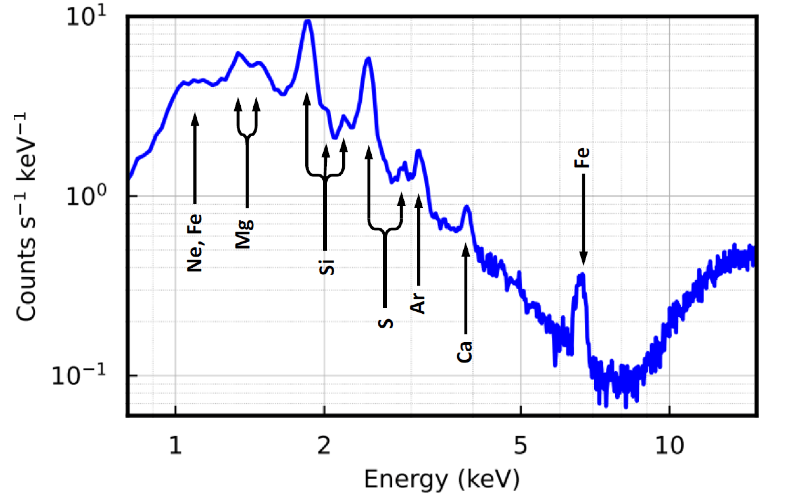XPoSat captures the first light from the Cassiopeia A (Cas A) supernova remnant using XSPECT Payload. XPoSat was launched on 1 January 2024. It is India’s first and the world’s second Polarimetric mission.
XPoSat is equipped with two essential payloads: the POLIX (POLarimeter Instrument in X-rays) and the XSPECT (X-ray SPECtroscopy and Timing). These instruments are designed to delve into the enigmatic realm of cosmic X-ray sources. The XSPECT payload, specifically, is dedicated to conducting continuous and prolonged spectral as well as temporal investigations of X-ray sources within the soft X-ray band.
XPoSat Captures Cassiopeia A supernova
On January 5, XPoSat received commands from ISRO to commence observations of the Cassiopeia A (Cas A) supernova remnant utilizing its XSPECT payload. Throughout multiple orbits, the spacecraft diligently collected spectroscopy data by scrutinizing the X-rays emitted from Cas A.
The analysis revealed the presence of elements such as Magnesium, Silicon, Sulphur, and Calcium, among others. It’s crucial to note that this particular observation served the sole purpose of validating the performance of the XSPECT payload. Cassiopeia A, a standard celestial source, was chosen specifically for its utility in instrument verification procedures. It’s important to highlight that XPoSat lacks imaging capability

Explanation of Chart: XSPECT captures the image of the supernova remnant Cassiopeia A (Cas A). The spectrum it observes includes background signals from Galactic Cosmic Rays (GCR) and Cosmic X-ray Background (CXB). The flux above 8 keV primarily originates from both CXB and GCR. The spectrum, as depicted in the figure, is a result of a cumulative integration time of 20,000 seconds, gathered over multiple orbits.

Read more in detail XPoSat: India’s 1st X-ray Polarimeter Satellite
The XSPECT payload was developed by the Space Astronomy Group at the U R Rao Satellite Centre (URSC) in Bengaluru. Its enduring capabilities for continuous observations are poised to play a pivotal role in advancing our comprehension of high-energy phenomena within the vast expanse of the universe.


